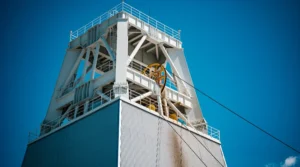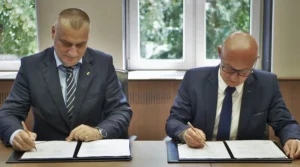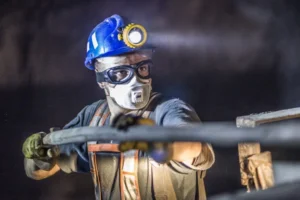What goes on in Poland on the 23rd of January.
Two NPPs instead of one
– We already have one location for the construction of a nuclear block in northern Poland. The second is to be built in the central part of the country – this is the declaration of Józef Sobolewski, director of the nuclear energy department at the Ministry of Energy.
– We plan to deliver the first block by 2033. In total, there will be six of them. We do not want to talk about power yet. We assume that it will be at the level of 6-9 GW. It is important to provide technical support and supervision – said Sobolewski. – We plan to build two power plants by 2043 – he added.
– We already have one location in the north and central Poland. This will be the result of a natural process of ending lignite mining – emphasized Sobolewski. However, he did not explicitly point out that Bełchatów could be the second location, but that is where the largest brown coal-fired power plant is located, with a developed transmission network that will save investment costs in distributing energy from a possible new nuclear unit in that region.
Bełchatów in the game?
He added that Poland would be running out of lignite. Construction of new mines will be very difficult to implement also at the border with Germany. – Investments in extracting this raw material are hardly an option. After 2030 there will be a sharp drop, and as a result of the implementation of BAT and BREF standards, the raw material will be increasingly difficult to extract – he emphasized.
Sobolewski reminded that when it comes to the first location of the power plant, two variants are considered: Lubiatowo and Żarnowiec. – Environmental studies have started in 2016, but the location and geological studies are still under way. A report is currently being prepared that will cover environmental research. The project is carried out by PGE EJ 1 – Sobolewski said. It is worth adding that BiznesAlert.pl already predicted such a solution.
The amendment of the nuclear special offer in February
– In February, we plan to finish work on the draft amendment to the nuclear specialization document and submit it to the Council of Ministers. We want it to go to the Sejm in this quarter. This is conditioned by the electoral calendar. Without the amendment it may turn out that the preparatory work will last even several years – added Józef Sobolewski.
Costs
Referring to the costs of building the power plant, Sobolewski said that his department had been working since 2017 on the new financing system and analyzing various options. He stressed that reliable data on the costs of building a nuclear power plant under Polish conditions will be known when an agreement with the general contractor is signed. – Investment expenditure per 1 GW will amount to about 1.5 billion to 5 billion (based on OECD data). This data shows that we are dealing with a large disparity. It is not worth discussing what the cost should be, because it will still be able to afford it. However, we will know reliable data when a ready offer is on the table – he emphasized.
Sobolewski clarified that the cost of energy production from a nuclear power plant, with strong support from State Treasury guarantees, amounts to PLN 150 / MWh. In commercial conditions it is already PLN 450 / MWh. As emphasized by the price of energy from investments, provided for in the draft energy strategy for the power of 6-9 GW, it is 100-135 billion PLN spread over 20 years.
– We are conducting talks with various potential contractors, but for now only the US has reacted unequivocally. On November 8, 2018, a declaration on energy security was signed between Poland and the United States, which included the cooperation of entities from both countries in the construction of nuclear power plants – Józef Sobolewski added.
Mentioning the investments for nuclear investments, based on the OECD report, he said they range from EUR 1.5 million / MW to around EUR 4.7 million / MW, not including costs of fluctuations in the value of money.
Consortium of scientific centers
Sobolewski also said about the planned consolidation of all nuclear research institutes subordinate to the ministry, operating under the aegis of the National Laboratory for Nuclear Energy. Its task is to include a technical support organization for all interested sides.








